Among the characteristics that make a Kawasaki, there is the Z and the apple green color. The last letter of the alphabet appeared on the sides of the “Kawa” in 1972, for the launch of the 900 71 which inaugurated the line of four-stroke motorcycles at the time. As for the green color, it adorns the fuel tanks of competing Kawasaki cars, just as red characterizes Ferrari cars.
Let’s not forget that we are in 2023: green is of course the color of ecology, and Z also means Zero Emission. The Japanese manufacturer has understood this well and is launching its first 100% electric motorcycle these days, called Z e-1, and that Frandroid was able to take charge for a few days.
Technical sheet
| Model | Kawasaki Z e-1 |
|---|---|
| Dimensions | 73cm x 103.5cm |
| Engine power | 9kW |
| Maximum torque | 40.5Nm |
| Number of assists | 4 |
| Battery technology | Li-Ion |
| Autonomy announced | 72km |
| Announced recharge time | 222 mins |
| Removable battery | Yes |
| Number of battery slots | 2 |
| Battery weight | 11.5kg |
| Bluetooth | Yes |
| GPS | Unknown |
| Electronic screen | Yes |
| Permit | A1 |
| Color | Money |
Product sheet |
This test was carried out using a model loaned by the brand.
Design: Z like very “Zolie”
“The new Z e-1 combines the aggressive styling of Z models with the fresh, futuristic expression of Kawasaki electric models”, indicates the manufacturer in its presentation. Rightly so, because the new Z e-1 adopts the look of a sparkling little roadster with its pearly color and touches of apple green, a charming little motorcycle that shines with its absence of an exhaust, which lightens its line. .
The visible black trellis borrowed from the Z 400 ensures optimal rigidity of the frame and surrounds the housing of the two batteries of 1.52 kWh each (total of 3.04 kWh), which are accessed by what was previously called the storage tank. ‘essence. A little lower, in an ideal position to lower the center of gravity, the 9 kW (15 hp) motor drives a very classic chain.
With its small size of 1.980 m long for a wheelbase of 1.37 m and its saddle height of 785 mm, here is a very “zolie” small motorcycle of 135 kg equivalent to 125 cm³, which can be driven with an A1 license. To get it out of the garage, a “Walk” mode drives the machine forward or backward, at slow speed, to move it without tiring.
Driving: a Z-shaped driving position
If the aesthetics are successful, it remains to be seen how this Z e-1 behaves on the road. Happy surprise, the driving position is simply perfect. Kawasaki calls this theErgofit, and it’s a total success. The surprisingly pleasant ergonomics of the seat facilitate the handling of the bike. The knees naturally fit into the tank, and the legs form a perfect thigh/shin/foot Z.
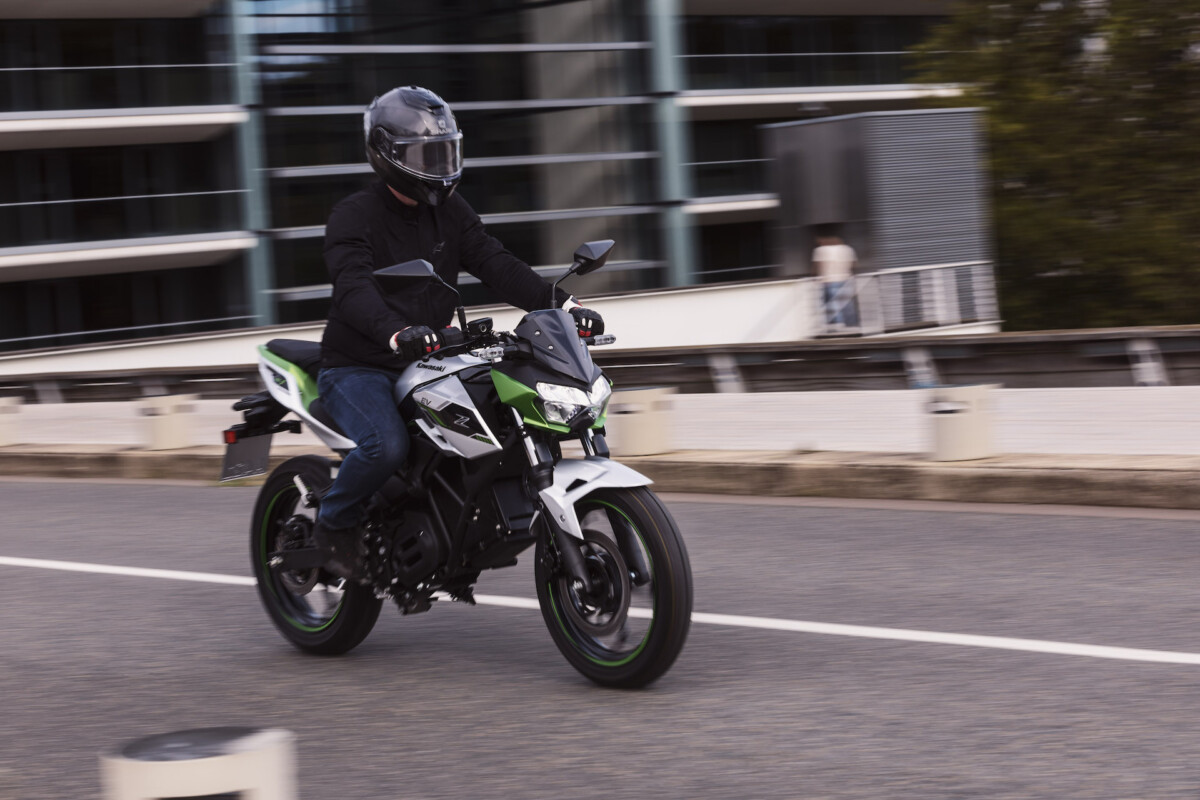
Beyond the gag, it’s a real pleasure to ride this Kawa. This is already a good point. Ignition on, right brake activated and red circuit breaker pressed to the “on” position with the right thumb, after a few seconds the TFT dashboard lights up in color, the motorcycle is ready to go. Or more precisely to take off, because in the “Road” position, the acceleration is frank, worthy of a large thermal displacement and even allows you to taunt Yamaha T-Max when starting… even if the speed tops out at 85 km/h.
If the bike can maintain this pace without flinching, you must engage Boost mode with the right thumb trigger to provide a zest of additional power for 15 seconds, and thus reach almost 100 km/h (99 km/h meter).
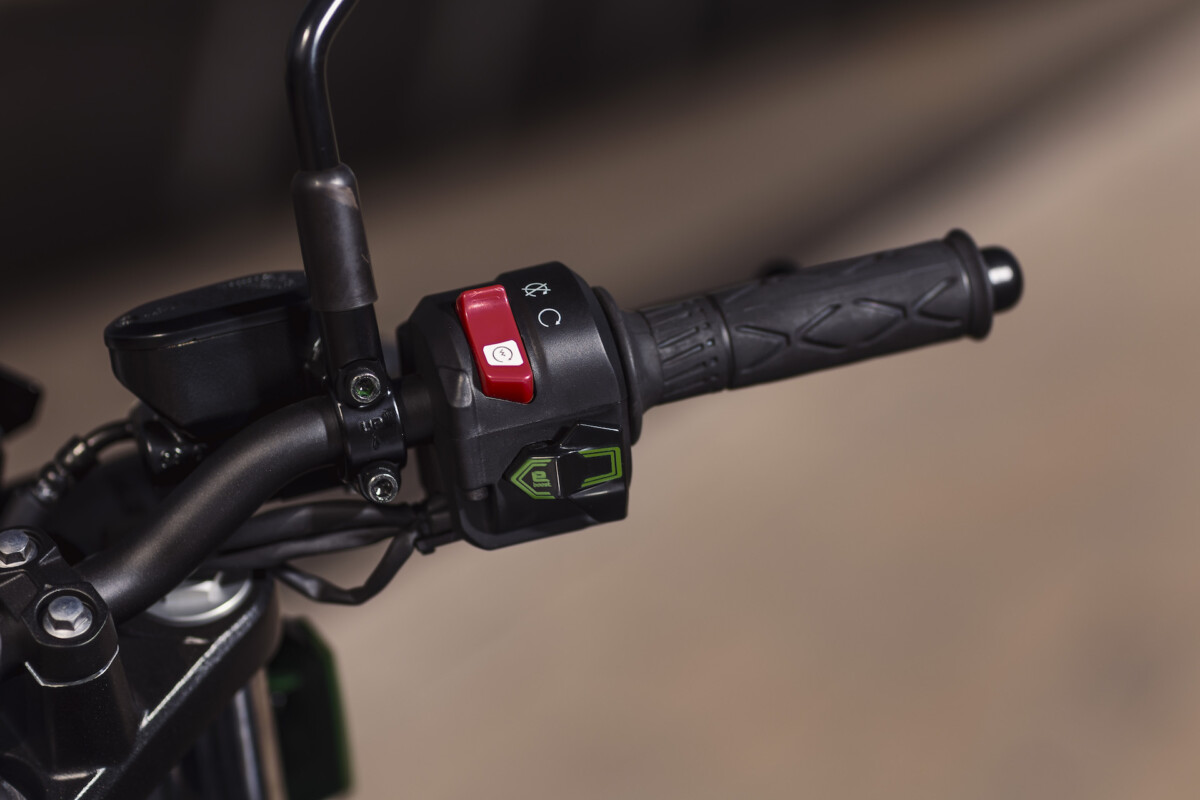
As the suspension is a bit firm, you almost feel like a pilot behind the wheel of a sports car, given the rewarding sensations offered by the 9 kW (15 hp) engine. To reassure yourself, the braking equipped with ABS is biting and is intended to be slightly regenerating to extend the range.
Autonomy: Z as in preserving autonomy
Let’s talk about autonomy. It is strongly recommended not to wring the right handle too much if you want to have a chance of arriving safely and especially of coming back. Certainly, the chilly temperature of 5°C which prevailed during our test did not benefit the performance of the 3 kWh battery, but we did not manage to exceed 55 km of autonomy, against 72 km announced. And again, by driving exclusively in eco mode.
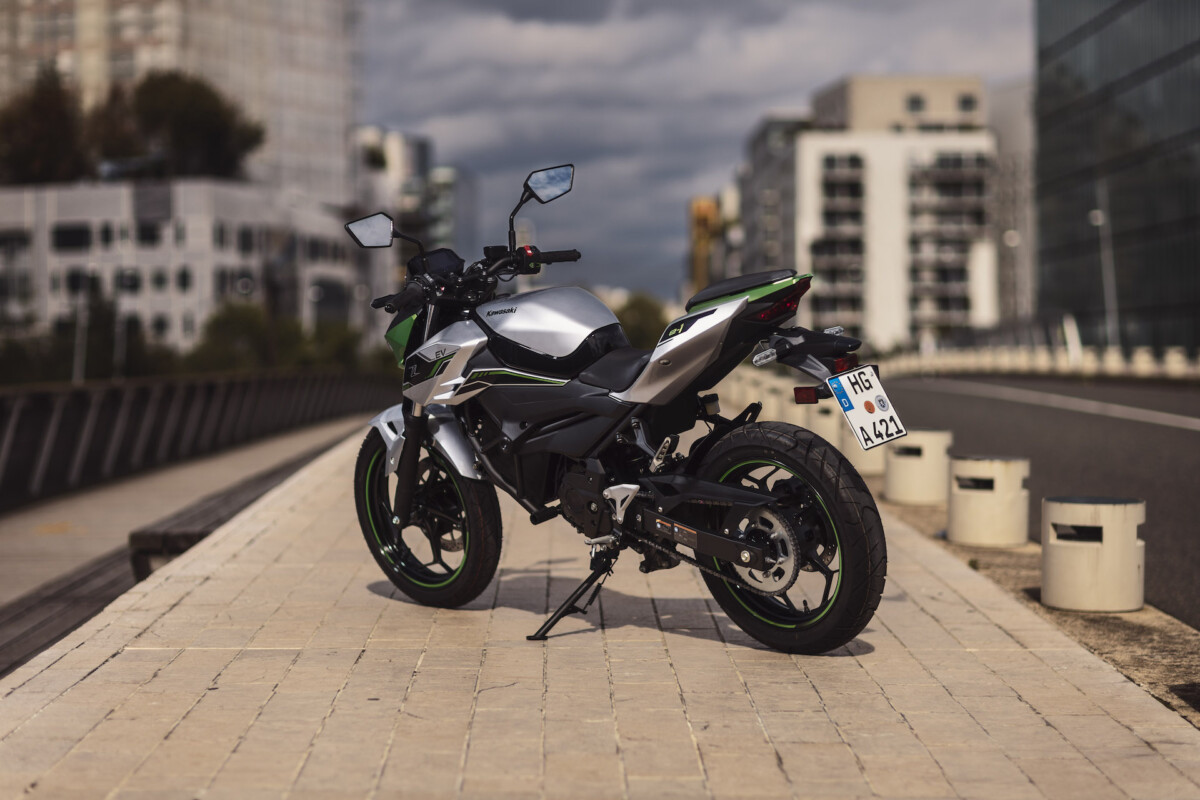
But at this rate, sensations change radically. Acceleration becomes anemic and the almost T-Max from earlier turns into a barely unrestrained version of a 50 cm³ scooter. You almost want to push with your foot to take off at the green light. We still end up reaching 50 km/h then, painfully, 60 km/h corner handle.
After the frustration, it is clear that in Paris and its surrounding suburbs, the heavy traffic makes us forget this drop in performance. If necessary, the boost mode allows small peaks of 72 km/h on the speedometer. Nothing hair-raising, but enough to overtake a van which hinders visibility. In any case, tested and validated by us, eco mode is the only way to preserve autonomy and reach a distance of 50 actual km.
Difficult to recharge on the street
Then you have to recharge. Advantage of the Z e-1, two methods are available to the user: either by directly plugging in the motorcycle, or by removing the batteries.
For the first case, you must plug the charger under the small passenger seat. The two batteries then recharge simultaneously for between 5 and 7 hours. This is the simplest solution if you have a closed garage, because this type of charging cannot be carried out in the street: the non-fixed charger would quickly be unplugged and stolen.
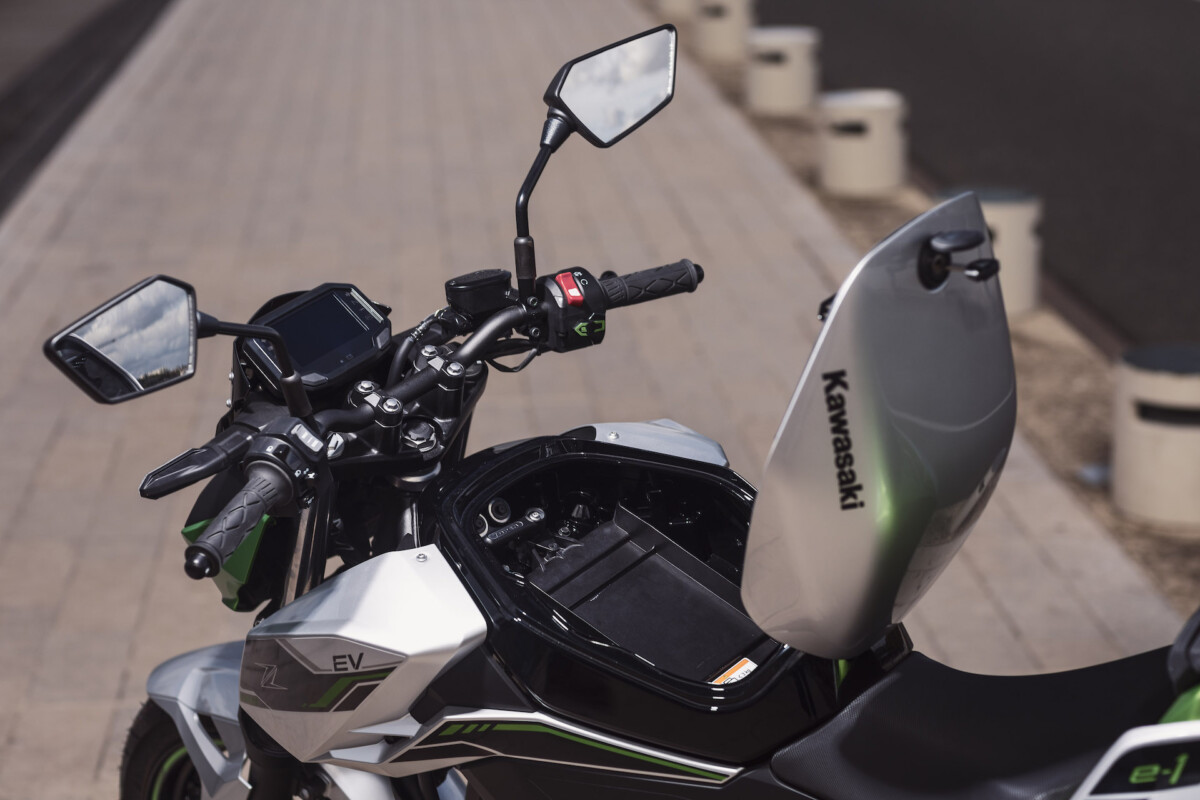
In the event of parking outside, you must therefore use the second method, which consists of removing the two batteries (or just one if you are in a hurry), each housed in what formerly served as a tank. Be careful not to forget to also take the charger, unless you have a second one at home at 314.72 euros each.
Problem, the batteries weigh 11.5 kg each and it is better not to live on the 6th floor without an elevator. Furthermore, despite their rubber handle, batteries are fragile items that should not be knocked against a wall. This semi-practical aspect deserves to be worked on.
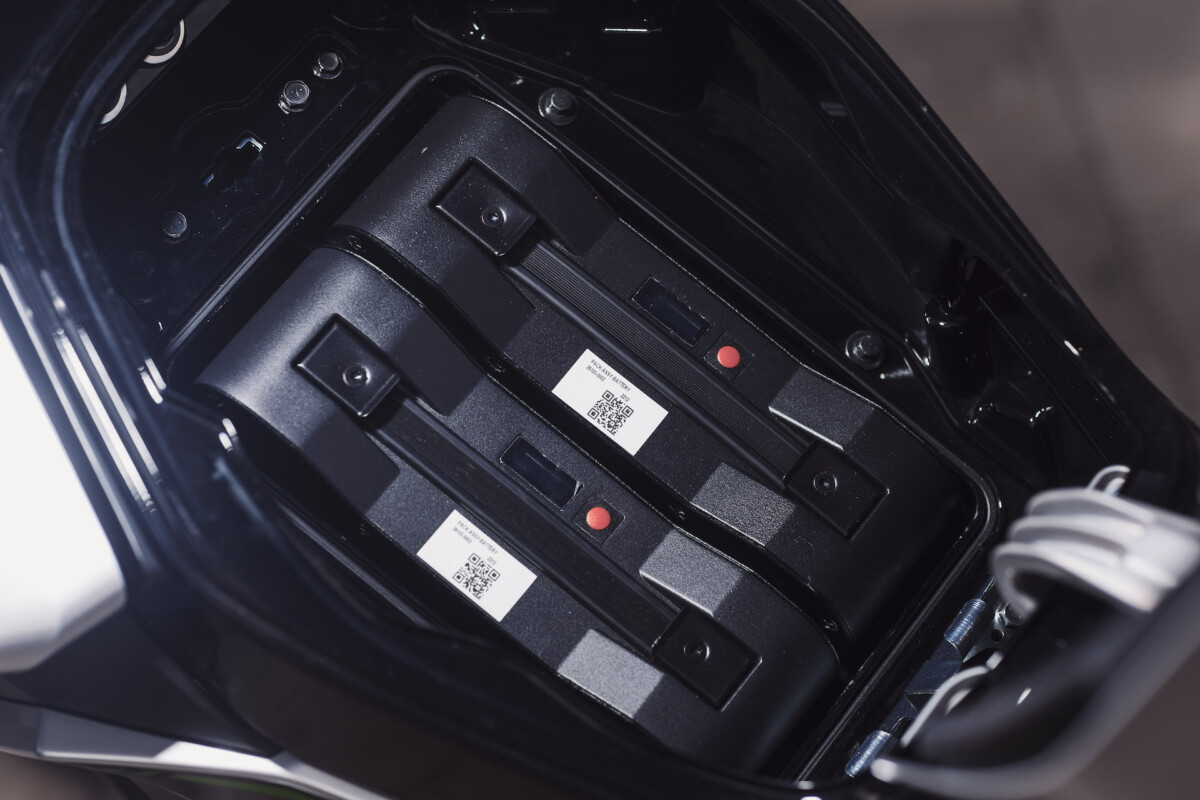
Remember: charging each battery separately can take up to 3 hours 30 minutes, and a charge from 25 to 85% lasts around 1 hour 30 minutes. A type 2 connection would be welcome to recharge the motorcycle directly on a terminal.
A somewhat “Zuperflue” application
The Z e-1 may be an ultra-modern electric motorcycle, but the Rideology app that accompanies it is not entirely satisfactory. Once the account is created and the smartphone is connected to the motorcycle, the app does not offer a plethora of information. It allows you to have a history of maintenance to be done, statistics on journeys taken and average consumption (around 18 km per kWh, or around 5.5 kWh / 100 km), and that’s about it. Incidentally, you can put several Kawasakis on your account.
And that’s what’s surprising: this app, quite advanced for thermal motorcycles, offers fewer features on this electric model. The app is mainly used to signal on the TFT screen that a call is incoming. To answer the call, you must have a headset with an intercom. Remember that hands-free kits are prohibited.
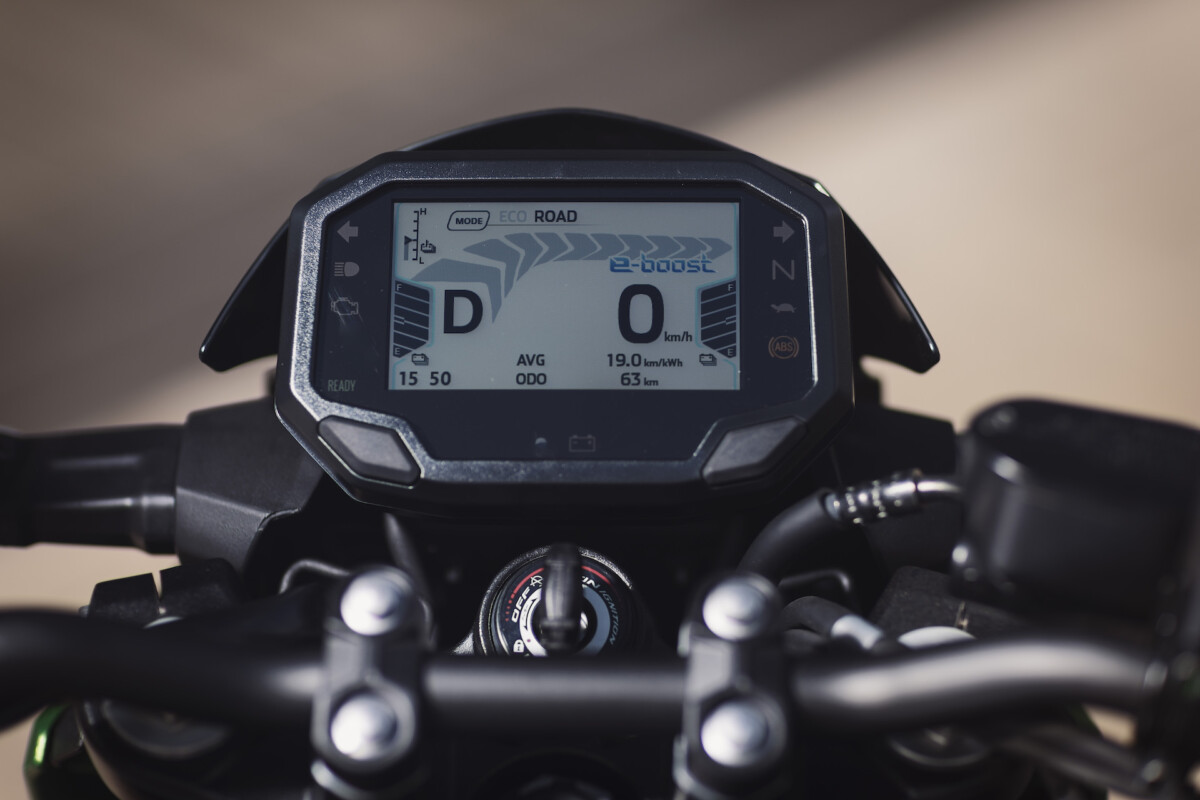
The app also allows you to know where the motorcycle is parked. Or almost: it actually indicates the last geographical point where the motorcycle and the app were connected. Did you use the motorcycle without using the app? Too bad for you.
Ultimately, this application can be useful for knowing whether you can undertake a journey or not, since it indicates the motorcycle’s charge level remotely. However, it is essential to attach the smartphone to the handlebars or any GPS to know the route precisely and not take the wrong path, otherwise you risk running out of fuel.
Price and availability: a Z for Urban area
For the rest, the little Kawa is rather satisfactory. Certainly, it is not a “real” 125 cm³ thermal car but, if you do less than 40 km daily and can recharge occasionally at the office, the Z e-1 does the job admirably. In Paris, it will even avoid paying parking, which can represent a substantial saving.
Speaking of savings, the list price of 8,399 euros decreases by 813 euros thanks to the ecological bonus and therefore falls below 7,600 euros. A much more acceptable price than the 12,990 euros demanded by BMW for its CE 04 scooter (while waiting for the CE 02 at 8,750 euros) or the 14,115 euros for the Zero Motorcycles FXE (A1 license version), even if these machines, at the price displayed excluding bonuses, offer much greater battery capacities: 6.2 kWh for the German and 7.2 kWh for the American, compared to only 3.2 kWh for the Japanese.
Nevertheless: the little Z e-1 relies on a pleasant driving position, more secure than a scooter, and a manufacturing quality worthy of the best Japanese motorcycles. This bike allows you to take the step towards electric mobility without breaking the bank too much with ease of handling trèZ appreciable, while waiting for a faired version called Ninja e-1.
Where to buy
Kawasaki Z e-1 at the best price?
There are no offers at the moment
